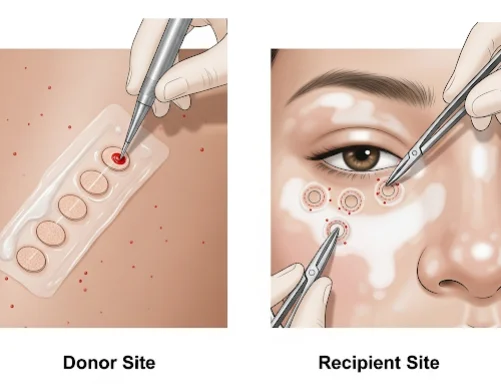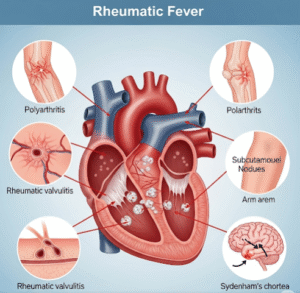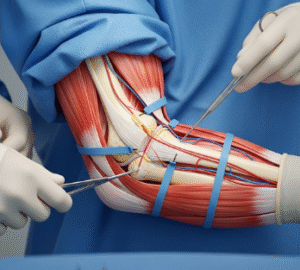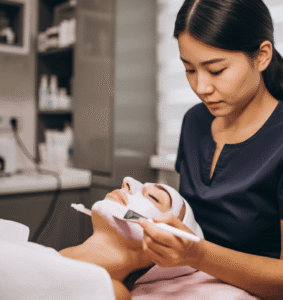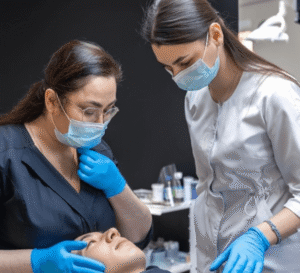What it is
Mini-punch grafting for vitiligo in Korea is a surgical technique used to restore pigmentation in stable vitiligo patches by transplanting tiny pieces of normally pigmented skin into depigmented areas.
This method involves using a punch tool (1–2 mm diameter) to harvest small grafts of healthy skin (usually from the thigh or buttock) and implanting them into vitiligo-affected skin. Over time, melanocytes (pigment-producing cells) migrate from the grafts into the surrounding depigmented skin, leading to repigmentation.
→ In Korea, mini-punch grafting is performed in dermatology hospitals and specialized vitiligo treatment centers, often alongside phototherapy to boost results.
• Best suited for stable vitiligo (no new or expanding patches for at least 6–12 months).
• Considered when medical treatments (topicals, phototherapy) fail to achieve satisfactory repigmentation.
Why it’s done
Patients in Korea undergo mini-punch grafting for vitiligo for:
→ Restoration of skin color → Especially in cosmetically sensitive areas like the face, hands, or lips.
→ Treatment-resistant vitiligo → When creams and phototherapy alone show limited results.
→ Psychological well-being → Helps reduce social anxiety and improve confidence.
→ Long-term repigmentation → Offers more permanent improvement compared to topicals.
→ Integration into holistic programs → Korea often combines surgery with NB-UVB or excimer laser phototherapy.
Alternatives
Other vitiligo treatment options include:
• Topical corticosteroids or calcineurin inhibitors → First-line therapy.
• Phototherapy → Narrowband UVB (NB-UVB) or excimer laser.
• Melanocyte-keratinocyte transplantation (MKTP) → Advanced cell-based therapy.
• Blister grafting → Uses epidermal grafts from suction blisters.
• Depigmentation therapy → For widespread vitiligo (monobenzone).
→ Mini-punch grafting is chosen for small, stable vitiligo patches resistant to standard therapies.
Preparation
Before mini-punch grafting in Korea, preparation includes:
- Stability confirmation → No new lesions or spread in the last 6–12 months.
- Medical review → Rule out keloid tendency, clotting disorders, or infections.
- Skin test areas → Sometimes a test graft is done to evaluate repigmentation response.
- Sun protection → Patients are advised to avoid tanning before surgery.
- Informed consent → Discussion of risks, expected results, and need for follow-up phototherapy.
→ Korean clinics often use digital imaging to document vitiligo stability and progress.
How it’s done
Mini-punch grafting for vitiligo in Korea is performed under local anesthesia:
- Donor site preparation → Usually thigh or buttock skin cleaned and anesthetized.
- Punch graft harvesting → Small, circular grafts (1–2 mm) taken from donor skin.
- Recipient site preparation → Small holes created in the depigmented patch.
- Graft placement → Pigmented grafts inserted into recipient sites.
- Dressing → Area covered with pressure dressing to promote graft take.
→ The procedure takes 1–2 hours, depending on patch size.
→ Typically performed in sessions to cover multiple areas.
Recovery
Recovery after mini-punch grafting in Korea is carefully managed:
• Initial healing → Donor and recipient sites heal within 1–2 weeks.
• Phototherapy integration → NB-UVB or excimer laser started 2–3 weeks after grafting to stimulate melanocyte spread.
• Repigmentation → Begins within 4–8 weeks; full results seen over 3–6 months.
• Aftercare → Avoid friction, trauma, or sunburn at treated sites.
• Long-term outcome → Results are usually stable if vitiligo remains non-progressive.
→ Most patients resume normal activities within a few days, avoiding pressure on grafted areas.
Complication
Possible risks of mini-punch grafting include:
- Cobblestoning → Raised, bumpy appearance at graft sites.
- Color mismatch → Donor skin may appear slightly different in tone.
- Infection → Rare with proper sterile technique.
- Scarring → At donor or recipient sites.
- Failure of repigmentation → If grafts don’t take or vitiligo reactivates.
→ Korean dermatologists minimize risks by using smaller punch sizes, advanced wound dressings, and combining with phototherapy.
Treatment option in Korea
Korea offers highly advanced mini-punch grafting programs for vitiligo:
→ Dermatology hospitals → Equipped with surgical units and NB-UVB/Excimer laser systems.
→ Refined techniques → Korean specialists use ultra-small punch grafts (≤1 mm) to reduce cobblestoning.
• Combination protocols → Grafting always paired with NB-UVB or excimer laser for better outcomes.
• Scar-minimizing care → Silicone gels, fractional laser, or PRP used for optimal healing.
• Medical tourism → International patients seek vitiligo care in Korea due to advanced surgical skills, aesthetic focus, and high repigmentation rates.
→ With its precision microsurgery, phototherapy integration, and focus on cosmetic outcomes, mini-punch grafting for vitiligo in Korea is a leading option for restoring pigmentation in resistant and stable cases.

